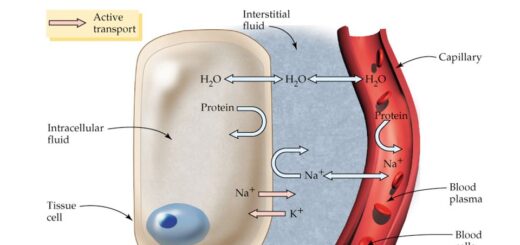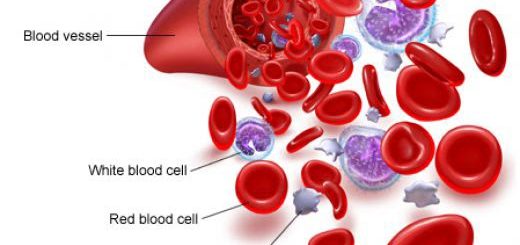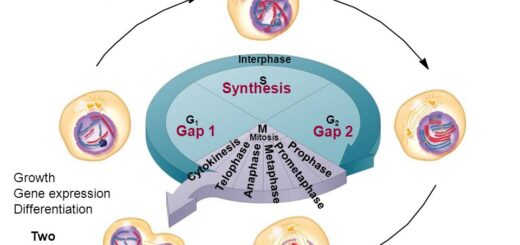Chemical transmission in Autonomic nervous system and Control of autonomic functions
Transmission at the synaptic junctions between preganglionic and postganglionic neurons and between the postganglionic neurons and the autonomic effectors are chemically mediated. The principal transmitter agents involved are acetylcholine and norepinephrine.
Autonomic nervous system
The autonomic fibers are classified into:
- Cholinergic: those secreting acetylcholine at their terminations.
- Adrenergic: those secreting noradrenaline at their terminations.
Acetylcholine
Acetylcholine acts as a chemical transmitter in the following sites:
- At the preganglionic neurons of both sympathetic and parasympathetic fibers (i.e. at the synapses of all autonomic ganglia).
- At the end of the preganglionic fibers supplying the adrenal medulla.
- At all parasympathetic postganglionic nerve endings.
- At some sympathetic postganglionic nerve endings namely those that innervate sweat glands and blood vessels in the skeletal muscles.
- At the neuromuscular junction, in the somatic nervous system.
Acetylcholine receptors
There are two different types of receptors; muscarinic and nicotinic. Muscarine is a drug that activates only the muscarinic receptors but will not activate the nicotinic receptors, whereas a small dose of nicotine will activate only nicotinic receptors. Acetylcholine activates both of them.
Muscarinic receptors
These receptors are activated by muscarine and acetylcholine. Muscarinic Ach receptors can be either excitatory or inhibitory. They are found in the following sites:
- All effector cells stimulated by the postganglionic neurons of the parasympathetic nervous system.
- Sweat glands and blood vessels of skeletal muscle inverted by postganglionic cholinergic neurons of the sympathetic system.
Nicotinic receptors
These receptors are activated by small doses of nicotine and acetylcholine. Nicotinic ACh receptors are always excitatory. The nicotinic receptors are found in the following sites:
- The synapse between the pre-and postganglionic neurons of both the sympathetic and parasympathetic systems.
- In the membranes of skeletal muscle fibers at the neuromuscular junction.
- Suprarenal medulla. The adrenal medulla is essentially a modified sympathetic ganglion that secretes catecholamines directly into the bloodstream.
Actions of acetylcholine
- Muscarinic actions are produced by stimulation of the muscarinic receptors. These actions are described as muscarine-like actions of acetylcholine e.g. stimulation of all postganglionic parasympathetic endings and sympathetic postganglionic endings to sweat glands and blood vessels of skeletal muscles.
- Nicotinic actions are produced by stimulation of the nicotinic receptors. These actions are described as a nicotine-like action of acetylcholine. e.g
- Stimulation of the autonomic ganglia.
- Secretion of adrenaline and noradrenaline from the adrenal medulla.
- Contraction of skeletal muscles due to stimulation at the motor endplates.
Noradrenaline
The transmitters in the sympathetic nervous system are catecholamine, chiefly norepinephrine (noradrenaline) and epinephrine (adrenaline).
Sites of release
The neurotransmitter noradrenaline is released from the postganglionic sympathetic neurons except those supplying sweat glands and the blood vessels of the skeletal muscle. It is also released from the adrenal medulla into the bloodstream.
Adrenergic receptors
These are receptors responding to noradrenaline and adrenaline. They are divided into 2 types: Alpha-receptors (α) and Beta-receptors (β).
Alpha-adrenergic receptors
They are subdivided into alpha 1 and alpha 2 receptors. Alpha 1 receptors are found in almost all effectors supplied by adrenergic nerve fibers. Alpha 1-adrenergic receptors are responding to noradrenaline and adrenaline, but they have a higher affinity for noradrenaline.
They are mainly excitatory e.g. they mediate vasoconstriction, contraction of the spleen, erection of hair … etc. However, there are exceptions e.g. they are inhibitory to intestinal muscles (relaxation).
The alpha 2-adrenergic receptors located on the presynaptic axon terminals produce a decreased release of norepinephrine when activated by norepinephrine in the synaptic cleft. This provides negative feedback control over the amount of norepinephrine released.
Beta-adrenergic receptors
Beta-adrenergic receptors are responding to adrenaline. They are subdivided into 2 types: beta 1 and beta 2.
- Beta 1 receptors are present chiefly in the heart, their stimulation producers excitatory effects e.g. increase in cardiac rate and strength of cardiac contraction.
- Beta 2 receptors are present in the smooth muscle of bronchioles, gastrointestinal tract, and urinary bladder. Stimulation of these receptors produces inhibitory effects.
Actions of noradrenaline and adrenaline
Noradrenaline excites mainly alpha-receptors but excites the beta-receptors to a slight extent as well. Thus, noradrenaline secreted by the adrenal medulla has the same effects on the different organs such as the one secreted from nerve endings, except that its action lasts for a longer time because it is slowly removed from the blood.
Adrenaline excites both types of receptors approximately equally. Therefore, the effects of noradrenaline and adrenaline on different effector organs are determined by the types of receptors in the organs.
Difference between noradrenaline and adrenaline
Adrenaline causes almost the same effects as those caused by noradrenaline, but the effects differ in the following respects:
- Adrenaline has a greater effect on cardiac stimulation than noradrenaline.
- Adrenaline causes only weak constriction of the blood vessels, in comparison with the much stronger constriction caused by noradrenaline.
- Adrenaline has to a great extent more metabolic effect than noradrenaline.
- Adrenaline has more inhibitory effects on the smooth muscles of the bronchioles and intestinal wall, so it is more useful in the treatment of bronchial asthma.
Valve of the adrenal medulla to the function of the sympathetic nervous system
Adrenaline and noradrenaline are almost always released by the adrenal medullae at the same time that the different organs are stimulated directly by generalized sympathetic activation.
Therefore, the organs are actually stimulated in two different ways simultaneously, directly by the sympathetic nerves and indirectly by the medullary hormones.
The two means of stimulation support each other. For instance, the total loss of the two adrenal medullae usually has little effect on the action of the sympathetic nervous system because the direct pathways can still perform almost all the necessary duties.
Control of autonomic functions
The autonomic nervous system is activated mainly by centers located in the spinal cord, brain stem, and hypothalamus. Also, portions of the cerebral cortex, especially of the limbic system (responsible for emotions), can transmit impulses to the lower centers and in this way influence autonomic control.
Spinal cord
Simple autonomic reflexes such as (micturition and defection) are integrated in the spinal cord, e.g.: Stretching of the full urinary bladder sends impulses to the sacral cord, and this, in turn, causes contraction of the bladder as well as relaxation of the urinary sphincter, thereby promoting micturition.
Brain stem
Many areas in the reticular substance of the medulla, pons, and midbrain, as well as many special nuclei, control different autonomic functions; such as arterial blood pressure, respiration, heart rate, glandular secretion in the gastrointestinal tract, and many others.
Higher control
Signals from the hypothalamus and even from the cerebrum can affect the activities of almost all the lower brain stem autonomic control centers. To some extent, the autonomic centers in the lower brain stem act as relay stations to control activities initiated at higher levels of the brain.
Hypothalamus
There is a parasympathetic centre in the anterior hypothalamus. So, stimulation of the anterior hypothalamic nuclei leads to parasympathetic responses as heart slowing, hypotension, salivation, increased gastric secretion, increased motility of gastrointestinal tract, urination, and defecation.
On the other hand, there is a sympathetic centre in the posterior hypothalamus. So, stimulation of the posterior hypothalamic nuclei results in sympathetic effects as: dilatation of pupils and widening of the palpebral fissure, increased heart rate, vasoconstriction, and increased arterial blood pressure, reduced motor activity of gastrointestinal tract, and other signs of sympathetic stimulation.
Cerebral cortex
Certain areas in the cerebral cortex can influence autonomic functions. The cerebral cortex affects both sympathetic and parasympathetic actions.
Reticular formation
It is responsible for the sympathetic and parasympathetic tones (i.e. normal functions). Sympathetic and parasympathetic nervous systems are usually active and the basal rate of activity is called sympathetic tone and parasympathetic tone, i.e sympathetic tone keeps almost all the blood vessels constricted to approximately half their diameter. By increasing the degree of sympathetic stimulation, blood vessels will be completely constricted. However, if the sympathetic nervous system is inhibited (less than normal), blood vessels will be dilated.
The higher areas of the brain can alter functions of the whole autonomic nervous system or portion of it, strongly enough to cause severe autonomic-induced disease such as peptic ulcer, constipation or diarrhea, heart palpitation, hypertension, what is known as psychosomatic effects.
Functions of Parasympathetic nervous system, Antagonistic & Synergistic effects
Functions of Sympathetic nervous system & Role of the sympathetic in emergencies
Autonomic nervous system, Reflex action types & Autonomic ganglia function
Nervous system (Central nervous system, Peripheral nervous system & Autonomic nervous system)



